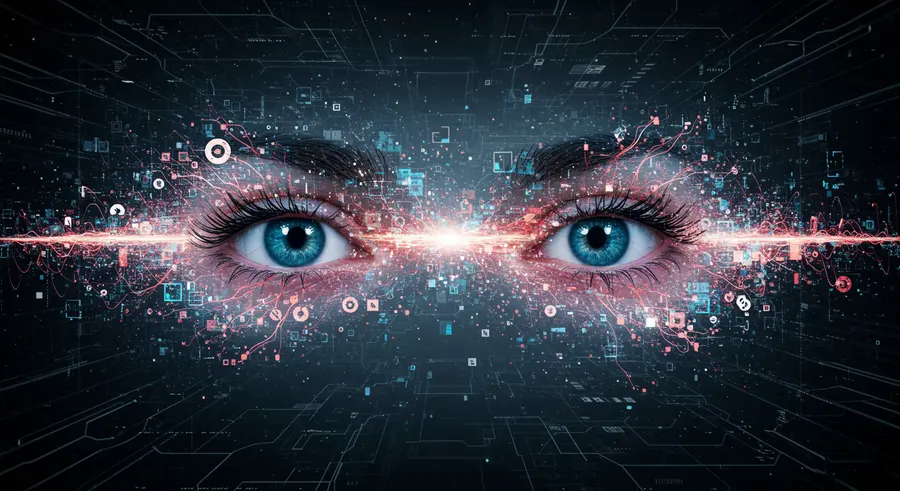Appearance

Welcome, fellow tech explorers! 👋 Today, we're delving into the fascinating and rapidly evolving world of 3D Computer Vision. This isn't just about seeing in three dimensions; it's about understanding, interpreting, and interacting with our physical world in ways previously unimaginable. But as with all powerful technologies, with great capability comes great responsibility. We'll also navigate the crucial ethical frontiers that emerge alongside these incredible advancements.
Computer Vision, as highlighted in our catalogue's Real-World Computer Vision Examples page, is already transforming industries from healthcare to automotive. Now, imagine adding the depth and spatial understanding of 3D vision!
🚀 The Rise of 3D Computer Vision: Beyond Flat Images
Traditional computer vision primarily deals with 2D images. While incredibly powerful, it lacks the depth perception crucial for many real-world applications. 3D Computer Vision, on the other hand, aims to reconstruct, process, and understand 3D information from visual data. This opens up a universe of possibilities:
- Enhanced Scene Understanding: Imagine a self-driving car that doesn't just detect objects, but understands their size, shape, and distance in real-time, allowing for safer and more nuanced navigation. 🚗
- Augmented Reality (AR) & Virtual Reality (VR): 3D vision is the backbone of immersive AR/VR experiences, enabling virtual objects to seamlessly blend into the real world and users to interact naturally with digital environments. 🎮
- Robotics & Automation: For robots to effectively navigate complex environments, grasp objects, and perform intricate tasks, a precise understanding of 3D space is indispensable. Think of robots in manufacturing or surgical assistance! 🤖
- Medical Imaging: From reconstructing organs in 3D for surgical planning to analyzing intricate cellular structures, 3D computer vision is revolutionizing diagnostics and treatment in healthcare. ⚕️
Recent advancements have propelled 3D computer vision forward, with key areas including:
- Neural Radiance Fields (NeRFs): These revolutionary models can generate novel views of complex 3D scenes from a sparse set of 2D images, creating incredibly realistic 3D representations. Imagine creating a full 3D model of a room just from a few photos!
- 3D Reconstruction from 2D Images: Algorithms are becoming increasingly sophisticated at inferring 3D shapes and depths from standard 2D photographs or video streams.
- Point Cloud Processing: Techniques for efficiently processing and interpreting vast datasets of 3D points (point clouds) captured by LiDAR or depth cameras are constantly improving, enabling applications like urban planning and autonomous mapping.
⚖️ Navigating the Ethical Landscape: Responsibility in 3D Vision
As 3D computer vision becomes more pervasive, so do the ethical considerations. The ability of machines to "see" and understand our world in three dimensions brings forth important questions about privacy, bias, and accountability.
- Privacy Concerns: The Depth of Surveillance: With 3D vision, surveillance systems can not only identify individuals but also infer their movements, poses, and even emotional states in a much more detailed manner. This raises significant concerns about individual privacy and the potential for misuse. How do we ensure that such powerful tools are not used to infringe upon fundamental rights? 🤔
- Bias in Training Data: A Three-Dimensional Problem: Just like 2D computer vision, 3D models are trained on vast datasets. If these datasets are not diverse and representative, the models can inherit and even amplify biases, leading to discriminatory outcomes. For example, a 3D pose estimation system trained predominantly on certain body types might perform poorly on others, leading to unfair applications. Building truly inclusive and ethical 3D vision systems requires meticulous attention to data diversity and fairness. 👨👩👧👦
- Accountability and Misinformation: When 3D Gets Real (and Fake): The power of 3D reconstruction and generative AI in computer vision also raises concerns about misinformation. Deepfakes, which are already challenging to detect in 2D, could become even more convincing and harder to differentiate from reality in 3D. Establishing clear accountability for the creation and dissemination of such content, and developing robust detection mechanisms, is paramount. 💡
🌐 The Path Forward: Responsible Innovation
The journey into 3D computer vision is just beginning. To ensure this technology benefits humanity, we must prioritize responsible innovation. This includes:
- Developing Ethical AI Frameworks: Establishing clear guidelines and regulations for the development and deployment of 3D computer vision systems.
- Investing in Diverse Datasets: Actively seeking out and curating datasets that are representative of the global population to mitigate bias.
- Promoting Transparency and Explainability: Making sure we understand how 3D vision models make their decisions, not just what they decide.
- Fostering Public Dialogue: Engaging in open conversations with society about the implications of these technologies and building public trust.
3D computer vision holds immense promise for solving complex problems and enhancing our lives. By proactively addressing its ethical challenges, we can shape a future where this powerful technology is used responsibly and for the greater good. Let's build a future where machines see not just with depth, but with discernment and respect! ✨